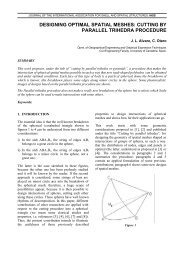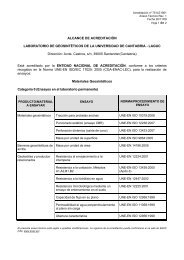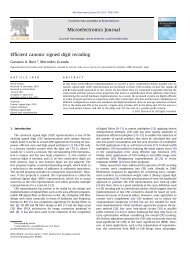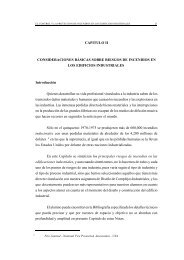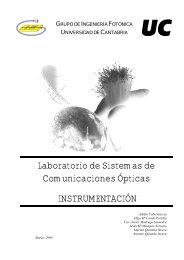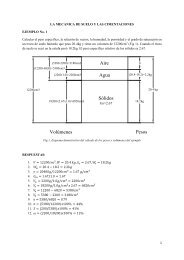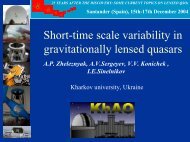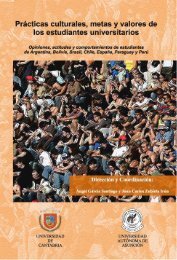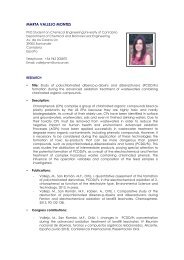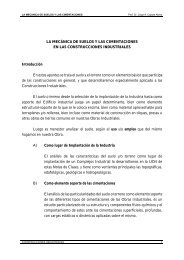XXXVII <str<strong>on</strong>g>IAHS</str<strong>on</strong>g><str<strong>on</strong>g>World</str<strong>on</strong>g> <str<strong>on</strong>g>C<strong>on</strong>gress</str<strong>on</strong>g> <strong>on</strong> <strong>Housing</strong>October 26 – 29, 2010, Santan<strong>de</strong>r, SpainCODE: 108AN ASSESSMENT TO IMPROVE QUALITY STRATEGIESFOR DESIGN AND CONSTRUCTION OF TIMBERDWELLINGS: A CASE STUDY IN TURKEYNimet ÖZTANK 1 , Fahriye Hilal HALICIOĞLU 2*1 Torbali Technical Vocati<strong>on</strong>al School of Higher Educati<strong>on</strong>1 University of the Dokuz Eylul1 e-mail: nimet.oztank@<strong>de</strong>u.edu.tr2* Department of Architecture2* University of the Dokuz Eylul2* e-mail: hilal.halicioglu@<strong>de</strong>u.edu.trKey words: Quality management, Strategic planning, Analytic Hierarchy Process (AHP),Customer requirements, TurkeyAbstractThis paper focuses <strong>on</strong> an assessment to improve quality-based strategies for <strong>de</strong>sign andc<strong>on</strong>structi<strong>on</strong> of timber dwellings through a case study in Turkey. The research provi<strong>de</strong>s amethodology to prioritize quality criteria in building <strong>de</strong>sign and c<strong>on</strong>structi<strong>on</strong> and to judgehow well the <strong>de</strong>sign and c<strong>on</strong>structi<strong>on</strong> of a timber dwelling quantitatively meet the <strong>de</strong>siredquality features. Also, this research aims to <strong>de</strong>velop quantitative parameters for timberdwellings. For this purpose, a focus group of resi<strong>de</strong>nts of timber dwellings located in Afy<strong>on</strong>,Turkey was formed to gather customer priorities of requirements.The analytic hierarchyprocess (AHP) was employed to <strong>de</strong>termine the priorities of their quality criteria. The casestudy findings showed that AHP could be successfully applied in the timber dwelling projectsto facilitate <strong>de</strong>sign and c<strong>on</strong>structi<strong>on</strong> <strong>de</strong>cisi<strong>on</strong>s. As a result of extensive literature review andobservati<strong>on</strong>s of the case study; the paper also lays stress <strong>on</strong> the importance of quality criteriaessential for timber dwellings. Finally, the most important quality criteria proposed relate toimproving quality-based strategies for the <strong>de</strong>sign and c<strong>on</strong>structi<strong>on</strong> of timber dwellings.37º <str<strong>on</strong>g>IAHS</str<strong>on</strong>g> <str<strong>on</strong>g>World</str<strong>on</strong>g> <str<strong>on</strong>g>C<strong>on</strong>gress</str<strong>on</strong>g> On <strong>Housing</strong> Science 63
XXXVII <str<strong>on</strong>g>IAHS</str<strong>on</strong>g><str<strong>on</strong>g>World</str<strong>on</strong>g> <str<strong>on</strong>g>C<strong>on</strong>gress</str<strong>on</strong>g> <strong>on</strong> <strong>Housing</strong>October 26 – 29, 2010, Santan<strong>de</strong>r, SpainCODE: 109SUSTAINABLE CONCRETE ROOF TILES CONTAININGRECYCLED GLASSPaulo H. R. Borges 1 , Túlio H. Panzera 2 , Fábio P. Cota 2 , Ant<strong>on</strong>io L. H. Sabariz 21 Department of Civil EngineeringFe<strong>de</strong>ral Centre for Technological Educati<strong>on</strong> of Minas Gerais, CEFET-MG, Brazilemail: pborges@civil.cefetmg.br2 Department of Mechanical EngineeringFe<strong>de</strong>ral University of São João <strong>de</strong>l Rei, UFSJ, BrazilKey words: recycled glass, sustainability, c<strong>on</strong>crete durabilityAbstractThe final disposal route of post-c<strong>on</strong>sumer recycled glass (RG) is a comm<strong>on</strong> issue for manymunicipalities worldwi<strong>de</strong>. Approximately 1 milli<strong>on</strong> t<strong>on</strong>s of glassware is produced per year inBrazil, <strong>on</strong>ly 47% of which are currently recycled. The i<strong>de</strong>a of incorporating RG as aggregatefor c<strong>on</strong>crete emerged in the 60´s motivated by some of the advantages of glass, i.e. low waterabsorpti<strong>on</strong>, high abrasi<strong>on</strong> and durability, aesthetic potential am<strong>on</strong>g others. However, theinitial researches have shown that c<strong>on</strong>cretes c<strong>on</strong>taining RG exhibited marked strengthregressi<strong>on</strong> and excessive expansi<strong>on</strong> due to alkali-aggregate reacti<strong>on</strong> (ASR), which limitedfurther research. The topic emerged again in the 90´s, imposed by the sustainability issues.Moreover, new studies aimed to <strong>de</strong>termine the c<strong>on</strong>diti<strong>on</strong>s at which ASR does not occur, aswell as the influence of RG <strong>on</strong> the physical properties of c<strong>on</strong>crete. Despite some literature <strong>on</strong>the use of RG into c<strong>on</strong>crete, its applicati<strong>on</strong> for making c<strong>on</strong>crete roof tiles is still notdocumented. The incorporati<strong>on</strong> of RG into those products, if feasible, may create asustainable material for c<strong>on</strong>structi<strong>on</strong> by reducing the land-filling of RG in municipalities nearthe c<strong>on</strong>crete tile plants. This paper investigates the use RG as replacement of 7.5% and 15%silica aggregate in c<strong>on</strong>crete roof tiles. Three grading of RG were studied, i.e. particles retainedbetween 4.76 – 1.68 mm, 1.68 – 0.84 mm and 0.84 – 0.30 mm sieves. Metakaolin (MK) hasbeen chosen to replace 7.5% and 15% wt. cement and potentially suppress ASR. The physicalproperties assessed were dry bulk <strong>de</strong>nsity, compressive strength and modulus of elasticity; theengineering properties <strong>de</strong>termined were apparent porosity and oxygen permeability. Resultsshowed that the use of 7.5% RG in combinati<strong>on</strong> with 7.5% MK provi<strong>de</strong>d equivalentperformance to reference semi-dry pre-cast c<strong>on</strong>crete and, therefore, permit a new route ofdisposal for the RG.37º <str<strong>on</strong>g>IAHS</str<strong>on</strong>g> <str<strong>on</strong>g>World</str<strong>on</strong>g> <str<strong>on</strong>g>C<strong>on</strong>gress</str<strong>on</strong>g> On <strong>Housing</strong> Science 64
- Page 1 and 2:
University ofCantabriawww.iahshousi
- Page 3 and 4:
ÍNDICE1. HONORARY COMMITTEE ______
- Page 5 and 6:
2. INTRODUCTIONThe International As
- Page 7:
4. ENTIDADES COLABORADORASColegio d
- Page 10 and 11:
6. ORGANIZING COMMITTEELOCAL ORGANI
- Page 12 and 13:
8. TOPICS - STATISTICSTOPIC I: MATE
- Page 14 and 15:
also the Spanish aristocracy used t
- Page 16 and 17: 11. CONFERENCE ROOMSThe Con
- Page 18 and 19: Also, the Congress
- Page 20 and 21: 13. PLENARY SESSIONSPLENARY SESSION
- Page 22 and 23: October 26, 9 h 30-10 h 00 (Room 0)
- Page 24 and 25: October 26, 10 h 30-11 h 00 (Room 0
- Page 26 and 27: October 27, 9 h 30-10 h 00 (Room 0)
- Page 28 and 29: October 27, 10 h 30-11 h 00 (Room 0
- Page 30 and 31: October 28, 9 h 30-10 h 00 (Room 0)
- Page 32 and 33: October 28, 10 h 30-11 h 00 (Room 0
- Page 34 and 35: October 26, 201011 h 30-13 h 30 Cha
- Page 36 and 37: October 26, 201011 h 30-13 h 30 Cha
- Page 38 and 39: October 27, 201011 h 30-13 h 30 Cha
- Page 40 and 41: October 27, 201011 h 30-13 h 30 Cha
- Page 42 and 43: October 28, 201011 h 30-13 h 30 Cha
- Page 44 and 45: October 28, 201011 h 30-13 h 30 Cha
- Page 46 and 47: 16. TECHNICAL EXPOSITION (STANDS)37
- Page 48 and 49: TRIP A: MARITIME MUSEUM + PEDREÑA
- Page 50 and 51: RECEPTION COCKTAIL BY THE MAYOR OFS
- Page 52 and 53: 37º IAHS
- Page 54 and 55: GALA DINNERDía 28 de OctubrePassin
- Page 56 and 57: 37º IAHS
- Page 58 and 59: 19. ABSTRACTS OF THE CONGRESSABSTRA
- Page 60 and 61: XXXVII IAHS<strong
- Page 62 and 63: XXXVII IAHS<strong
- Page 64 and 65: XXXVII IAHS<strong
- Page 71 and 72: XXXVII IAHS<strong
- Page 73 and 74: XXXVII IAHS<strong
- Page 75 and 76: XXXVII IAHS<strong
- Page 77 and 78: XXXVII IAHS<strong
- Page 79 and 80: XXXVII IAHS<strong
- Page 81 and 82: XXXVII IAHS<strong
- Page 83 and 84: XXXVII IAHS<strong
- Page 85 and 86: XXXVII IAHS<strong
- Page 87 and 88: XXXVII IAHS<strong
- Page 89 and 90: XXXVII IAHS<strong
- Page 91 and 92: XXXVII IAHS<strong
- Page 93 and 94: XXXVII IAHS<strong
- Page 95 and 96: XXXVII IAHS<strong
- Page 97 and 98: XXXVII IAHS<strong
- Page 99 and 100: XXXVII IAHS<strong
- Page 101 and 102: XXXVII IAHS<strong
- Page 103 and 104: XXXVII IAHS<strong
- Page 105 and 106: XXXVII IAHS<strong
- Page 107 and 108: XXXVII IAHS<strong
- Page 109 and 110: XXXVII IAHS<strong
- Page 111 and 112: XXXVII IAHS<strong
- Page 113 and 114: XXXVII IAHS<strong
- Page 115 and 116: XXXVII IAHS<strong
- Page 117 and 118:
XXXVII IAHS<strong
- Page 119 and 120:
XXXVII IAHS<strong
- Page 121 and 122:
XXXVII IAHS<strong
- Page 123 and 124:
XXXVII IAHS<strong
- Page 125 and 126:
XXXVII IAHS<strong
- Page 127 and 128:
XXXVII IAHS<strong
- Page 129 and 130:
XXXVII IAHS<strong
- Page 131 and 132:
XXXVII IAHS<strong
- Page 133 and 134:
XXXVII IAHS<strong
- Page 135 and 136:
XXXVII IAHS<strong
- Page 137 and 138:
XXXVII IAHS<strong
- Page 139 and 140:
XXXVII IAHS<strong
- Page 141 and 142:
XXXVII IAHS<strong
- Page 143 and 144:
XXXVII IAHS<strong
- Page 145 and 146:
XXXVII IAHS<strong
- Page 147 and 148:
XXXVII IAHS<strong
- Page 149 and 150:
XXXVII IAHS<strong
- Page 151 and 152:
XXXVII IAHS<strong
- Page 153 and 154:
XXXVII IAHS<strong
- Page 155 and 156:
XXXVII IAHS<strong
- Page 157 and 158:
XXXVII IAHS<strong
- Page 159 and 160:
XXXVII IAHS<strong
- Page 161 and 162:
XXXVII IAHS<strong
- Page 163 and 164:
XXXVII IAHS<strong
- Page 165 and 166:
XXXVII IAHS<strong
- Page 167 and 168:
XXXVII IAHS<strong
- Page 169 and 170:
XXXVII IAHS<strong
- Page 171 and 172:
XXXVII IAHS<strong
- Page 173 and 174:
XXXVII IAHS<strong
- Page 175 and 176:
XXXVII IAHS<strong
- Page 177 and 178:
XXXVII IAHS<strong
- Page 179 and 180:
XXXVII IAHS<strong
- Page 181 and 182:
XXXVII IAHS<strong
- Page 183 and 184:
XXXVII IAHS<strong
- Page 185 and 186:
XXXVII IAHS<strong
- Page 187 and 188:
XXXVII IAHS<strong
- Page 189 and 190:
XXXVII IAHS<strong
- Page 191 and 192:
XXXVII IAHS<strong
- Page 193 and 194:
XXXVII IAHS<strong
- Page 195 and 196:
XXXVII IAHS<strong
- Page 197 and 198:
TOPIC IV - HEALTH, COMFORT AND SAFE
- Page 199 and 200:
XXXVII IAHS<strong
- Page 201 and 202:
XXXVII IAHS<strong
- Page 203 and 204:
XXXVII IAHS<strong
- Page 205 and 206:
XXXVII IAHS<strong
- Page 207 and 208:
XXXVII IAHS<strong
- Page 209 and 210:
XXXVII IAHS<strong
- Page 211 and 212:
XXXVII IAHS<strong
- Page 213 and 214:
XXXVII IAHS<strong
- Page 215 and 216:
XXXVII IAHS<strong
- Page 217 and 218:
XXXVII IAHS<strong
- Page 219 and 220:
XXXVII IAHS<strong
- Page 221 and 222:
XXXVII IAHS<strong
- Page 223 and 224:
XXXVII IAHS<strong
- Page 225 and 226:
XXXVII IAHS<strong
- Page 227 and 228:
XXXVII IAHS<strong
- Page 229 and 230:
XXXVII IAHS<strong
- Page 231 and 232:
XXXVII IAHS<strong
- Page 233 and 234:
XXXVII IAHS<strong
- Page 235 and 236:
TOPIC VI - URBAN AND CITY PLANNING.
- Page 237 and 238:
XXXVII IAHS<strong
- Page 239 and 240:
XXXVII IAHS<strong
- Page 241 and 242:
XXXVII IAHS<strong
- Page 243 and 244:
XXXVII IAHS<strong
- Page 245 and 246:
XXXVII IAHS<strong
- Page 247 and 248:
XXXVII IAHS<strong
- Page 249 and 250:
XXXVII IAHS<strong
- Page 251 and 252:
XXXVII IAHS<strong
- Page 253 and 254:
XXXVII IAHS<strong
- Page 255 and 256:
XXXVII IAHS<strong
- Page 257 and 258:
XXXVII IAHS<strong
- Page 259 and 260:
XXXVII IAHS<strong
- Page 261 and 262:
XXXVII IAHS<strong
- Page 263 and 264:
XXXVII IAHS<strong
- Page 265 and 266:
TOPIC VII - ECONOMY AND FINANCING P
- Page 267 and 268:
XXXVII IAHS<strong
- Page 269 and 270:
XXXVII IAHS<strong
- Page 271 and 272:
XXXVII IAHS<strong
- Page 273 and 274:
TOPIC VIII - MANAGEMENT SCHEMES AND
- Page 275 and 276:
XXXVII IAHS<strong
- Page 277 and 278:
XXXVII IAHS<strong
- Page 279 and 280:
XXXVII IAHS<strong
- Page 281 and 282:
XXXVII IAHS<strong
- Page 283 and 284:
XXXVII IAHS<strong
- Page 285 and 286:
XXXVII IAHS<strong
- Page 287 and 288:
XXXVII IAHS<strong
- Page 289 and 290:
XXXVII IAHS<strong
- Page 291 and 292:
XXXVII IAHS<strong
- Page 293 and 294:
XXXVII IAHS<strong
- Page 295 and 296:
XXXVII IAHS<strong
- Page 297 and 298:
XXXVII IAHS<strong
- Page 299 and 300:
XXXVII IAHS<strong
- Page 301 and 302:
XXXVII IAHS<strong
- Page 303 and 304:
XXXVII IAHS<strong
- Page 305 and 306:
XXXVII IAHS<strong
- Page 307 and 308:
XXXVII IAHS<strong
- Page 309 and 310:
XXXVII IAHS<strong
- Page 311 and 312:
XXXVII IAHS<strong
- Page 313 and 314:
XXXVII IAHS<strong
- Page 315 and 316:
XXXVII IAHS<strong
- Page 317 and 318:
XXXVII IAHS<strong
- Page 319 and 320:
XXXVII IAHS<strong
- Page 321 and 322:
XXXVII IAHS<strong
- Page 323 and 324:
XXXVII IAHS<strong
- Page 325 and 326:
XXXVII IAHS<strong
- Page 327 and 328:
XXXVII IAHS<strong
- Page 329 and 330:
XXXVII IAHS<strong
- Page 331 and 332:
XXXVII IAHS<strong
- Page 333 and 334:
XXXVII IAHS<strong
- Page 335 and 336:
XXXVII IAHS<strong
- Page 337 and 338:
XXXVII IAHS<strong
- Page 339 and 340:
XXXVII IAHS<strong
- Page 341 and 342:
XXXVII IAHS<strong
- Page 343 and 344:
XXXVII IAHS<strong
- Page 345 and 346:
XXXVII IAHS<strong
- Page 347 and 348:
XXXVII IAHS<strong
- Page 349 and 350:
XXXVII IAHS<strong
- Page 351 and 352:
XXXVII IAHS<strong
- Page 353 and 354:
XXXVII IAHS<strong
- Page 355 and 356:
XXXVII IAHS<strong
- Page 357 and 358:
XXXVII IAHS<strong
- Page 359 and 360:
XXXVII IAHS<strong
- Page 361 and 362:
XXXVII IAHS<strong
- Page 363 and 364:
XXXVII IAHS<strong
- Page 365 and 366:
XXXVII IAHS<strong
- Page 367 and 368:
XXXVII IAHS<strong
- Page 369 and 370:
XXXVII IAHS<strong
- Page 371 and 372:
XXXVII IAHS<strong
- Page 373 and 374:
XXXVII IAHS<strong
- Page 375 and 376:
XXXVII IAHS<strong
- Page 377 and 378:
XXXVII IAHS<strong



